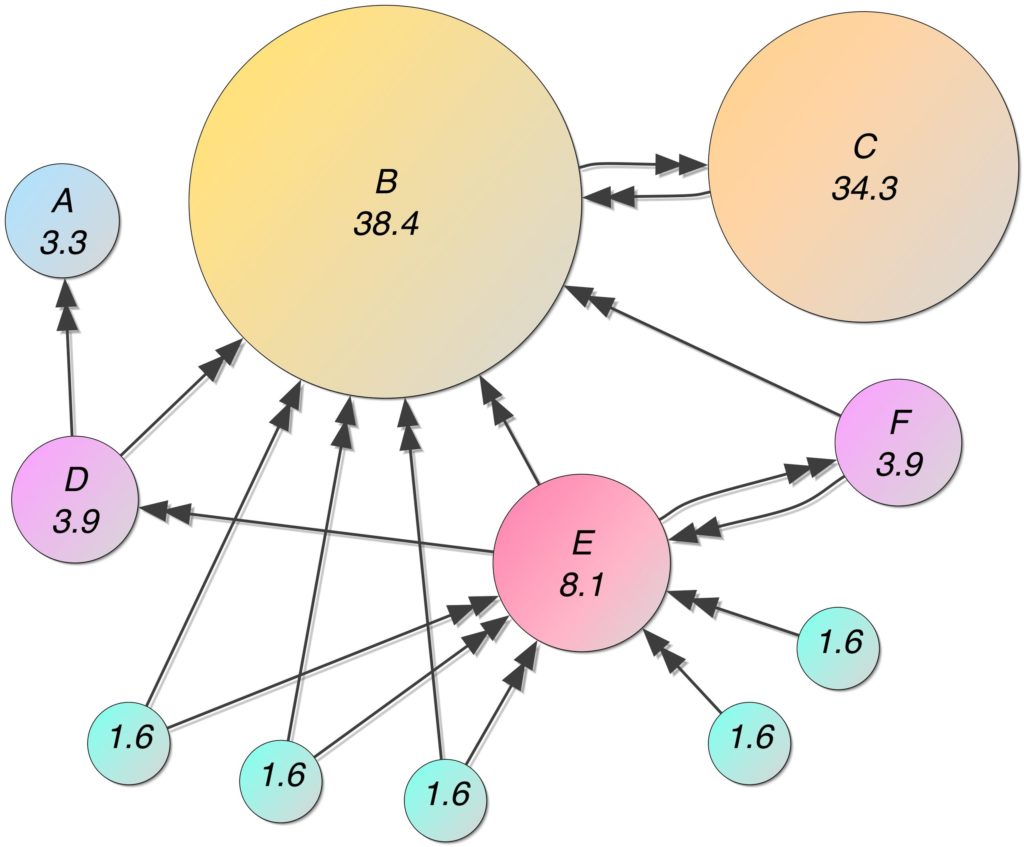Domain Rating is a Grade for Link Quality
Search engine optimization (SEO) companies use a measure called “Domain Rating” to simplify the incoming link quality question. Ahrefs, an SEO company that tracks over 170 million root domains, defines Domain Rating as:
A metric that shows the “link popularity” of your website compared to all other websites in the world on a scale from 0 to 100.
Sounds simple enough. But how is that popularity calculated?
- It isn’t determined by total links, it’s determined by unique referring domains. That means that the second, third, and subsequent links from a given domain won’t improve the Domain Rating of your think tank.
- A domain with a higher Domain Rating (DR) confers more DR to other sites. To win a popularity contest, you need to popular with the popular kids.
- With each outgoing link, a domain confers less DR. This works like inflation—each new link minted dilutes the value a domain can pass along.
- As a referring site’s DR changes, so will yours. This contest is ongoing, so if a site that links to you gets more unique domains pointing to them, their DR will go up, and therefore so will yours. The reverse is also true.
This simplified diagram of Google’s original PageRank system shows how this sort of backlink mapping works:

Domain Rating is Your Online Reputation
Domain rating is essentially your online reputation, so it helps to think about how reputation works offline. A scholar that is new to their field can be taken seriously when their research is published by a well-respected institution. That stamp of approval goes a long way—institutions give scholars a platform so they don’t have to start from zero.
Similarly, your think tanks’s domain (ex:thinktank.org) bolsters the reputation of its individual pages, even when those pages have few or no direct links.
In this way, Domain Ranking can be seen as asset, just as reputation—brand equity, if you’re fancy—is a commonly recognized asset.
How to Use Domain Rating
Okay, that makes sense, but what do you do with this information?
1. Benchmark Against Your Competitors
Let’s say that your domain has Domain Rating of 56 and another think tank has a Domain Rating of 62. If you’re covering the same issues, that means there’s untapped linking opportunities for your group. Time to get to work!
By using Aherf’s Link Intersect tool, you can compare your backlink profile to those of your competitors and figure out who links to them, who links to you, and who is linking to both of you to find areas of opportunity.
2. Link Prospecting
Once you’ve looked at your competitors and found areas where you might build incoming links, you can use the Domain Rating score of those prospects to vet them and target those with the highest scores.
So, as much as DR is a useful benchmark to know where you stand, it’s even more valuable to know the DR of others.
